
Oscar Fingal O'Fflahertie Wills Wilde was an Irish poet and playwright. After writing in different forms throughout the 1880s, he became one of the most popular playwrights in London in the early 1890s. He is best remembered for his epigrams and plays, his novel The Picture of Dorian Gray, and his criminal conviction for gross indecency for homosexual acts.

"Snow White" is a German fairy tale, first written down in the early 19th century. The Brothers Grimm published it in 1812 in the first edition of their collection Grimms' Fairy Tales, numbered as Tale 53. The original German title was Sneewittchen; the modern spelling is Schneewittchen. The Grimms completed their final revision of the story in 1854, which can be found in the 1857 version of Grimms' Fairy Tales.

"Sleeping Beauty", also titled in English as The Sleeping Beauty in the Woods, is a fairy tale about a princess cursed by an evil fairy to sleep for a hundred years before being awakened by a handsome prince. A good fairy, knowing the princess would be frightened if alone when she wakes, uses her wand to put every living person and animal in the palace and forest asleep, to awaken when the princess does.

"The Little Mermaid", sometimes translated in English as "The Little Sea Maid", is a fairy tale written by Danish author Hans Christian Andersen. Originally published in 1837 as part of a collection of fairy tales for children, the story follows the journey of a young mermaid princess who is willing to give up her life in the sea as a mermaid to gain a human soul.
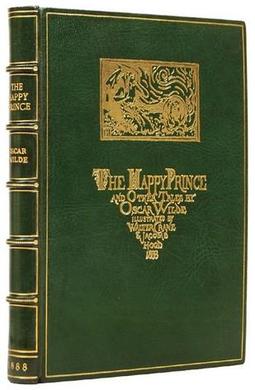
The Happy Prince and Other Tales is a collection of stories for children by Oscar Wilde first published in May 1888. It contains five stories: "The Happy Prince," "The Nightingale and the Rose," "The Selfish Giant," "The Devoted Friend," and "The Remarkable Rocket." In 2003, the second through fourth stories were adapted by Lupus Films and Terraglyph Interactive Studios into the three-part series Wilde Stories for Channel 4.
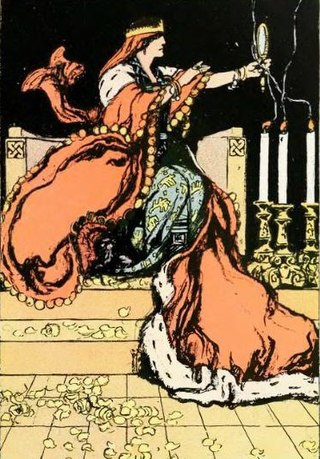
The Evil Queen, also called the Wicked Queen or the Queen, is a fictional character and the main antagonist of "Snow White," a German fairy tale recorded by the Brothers Grimm; similar stories exist worldwide. Other versions of the Queen appear in subsequent adaptations and continuations of the fairy tale, including novels and films. One particularly notable version is Disney's depiction, sometimes known as Queen Grimhilde. The character has also become an archetype that inspired unrelated works.

"The Fisherman and His Wife" is a German fairy tale collected by the Brothers Grimm in 1812. The tale is of Aarne–Thompson type 555, about dissatisfaction and greed. It may be classified as an anti-fairy tale.
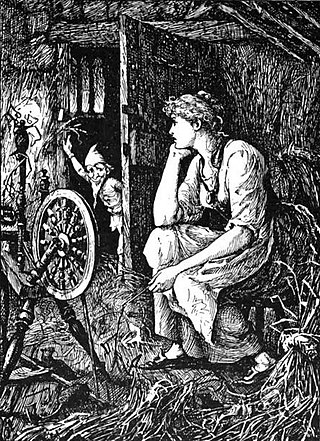
The Langs' Fairy Books are a series of 25 collections of true and fictional stories for children published between 1889 and 1913 by Andrew Lang and his wife, Leonora Blanche Alleyne. The best known books of the series are the 12 collections of fairy tales also known as Andrew Lang's "Coloured" Fairy Books or Andrew Lang's Fairy Books of Many Colors. In all, the volumes feature 798 stories, besides the 153 poems in The Blue Poetry Book.

The Yellow Dwarf is a French literary fairy tale by Madame d'Aulnoy. Andrew Lang included it in The Blue Fairy Book.
Morgens, morgans, or mari-morgans are Welsh and Breton water spirits that drown men.

The Sea-Maiden is a Scottish fairy tale collected by John Francis Campbell in Popular Tales of the West Highlands, listing his informant as John Mackenzie, fisherman, near Inverary. Joseph Jacobs included it in Celtic Fairy Tales.

The Legend of Snow White is an Italian-Japanese anime series produced by Tatsunoko Productions and Mondo TV, based on the 1812 European fairy tale. Directed by Kunitoshi Okajima, the series premiered on NHK on 6 April 1994 and ran for 52-episodes until its conclusion on 29 March 1995.
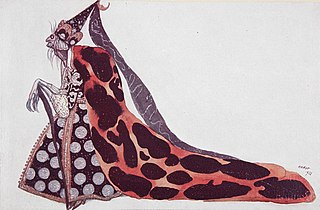
The Wicked fairy is the antagonist of Sleeping Beauty. In some adaptations, she is known as Carabosse. The most notable adaptation of the character is Maleficent, a Disney villain who appeared in various Disney media, beginning with the 1959 Walt Disney film Sleeping Beauty.

Pederasty or paederasty is a sexual relationship between an adult man and a boy. It was a socially acknowledged practice in Ancient Greece and Rome and elsewhere in the world, such as Pre-Meiji Japan.
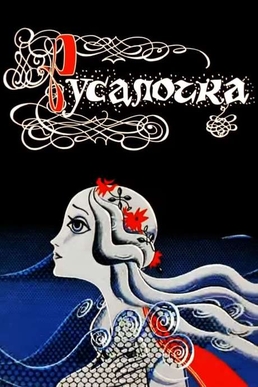
The Little Mermaid is a 1968 Soviet animated film based on Hans Christian Andersen's 1837 fairy tale "The Little Mermaid". The film was adapted in English by Films by Jove for the series Fairy Tales from Far Off Lands, second season of Stories from My Childhood.

This is a bibliography of works by Oscar Wilde (1854–1900), a late-Victorian Irish writer. Chiefly remembered today as a playwright, especially for The Importance of Being Earnest, and as the author of The Picture of Dorian Gray; Wilde's oeuvre includes criticism, poetry, children's fiction, and a large selection of reviews, lectures and journalism. His private correspondence has also been published.
Fairer-than-a-Fairy is a literary fairy tale published anonymously in the 1718 fairy tale collection Nouveaux contes de fées. It is attributed to the Chevalier de Mailly. Andrew Lang included it in The Yellow Fairy Book.
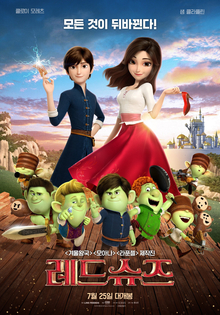
Red Shoes and the Seven Dwarfs, known in Korean as simply Red Shoes, is a 2019 English-language South Korean animated fantasy film produced by Locus Corporation. It is based on the 1812 German-language fairy tale "Snow White" by the Brothers Grimm, and its name is derived from the 1845 Danish fairy tale The Red Shoes by Hans Christian Andersen. The film features the voices of Chloë Grace Moretz, Sam Claflin, Gina Gershon, Patrick Warburton, and Jim Rash.
Princess Aubergine is an Indian folktale collected by Flora Annie Steel and sourced from the Punjab region. It concerns a princess whose lifeforce is tied to a necklace, and, as soon as it falls in the hand of a rival, the princess falls into a death-like sleep - comparable to heroines of European fairy tales Snow White and Sleeping Beauty. Variants exist in India, both with a heroine and a hero whose life is attached to a magical necklace.

















